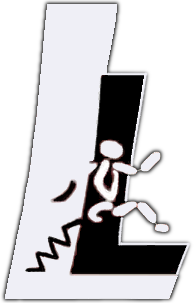Robust phase-based control of prosthetic feet and biologically inspired joint coupling (2018 - 2021)
Human locomotion is the outcome of a complex and fascinating interaction between body mechanics, actuator dynamics and the neural control system. In the case of lower limb loss, amputees suffer from reduced functionality and limited power generation of their passive prosthetic limbs. To overcome such limitations, in recent years, researchers have developed powered prostheses to emulate the joint motions similar to able-bodied people.
Current studies show that powered prosthetic can reproduce natural human ankle range of motion and power in walking and running. Regarding the control of prosthetic feet further research is necessary in order to be able to recognize and support as many situations in everyday live as possible.
Phase based controls are considered particularly robust control approaches for powered prosthetic feet. They rely on invariant trajectories of human locomotion, from which an invertible relation between the user’s states and gait phase is derived. The gait phase can then be used to compute reference signals for the actuators. Hence phase based approaches can react on irregular movements and changing gait parameters. Phase based approaches for powered prosthetic feet exist for standing, level walking and running. The first aim of this research project is the development of a phase based controller which includes standing and level walking as well as stair climbing and safe transitions between these motion types. Human experiments on an instrumented stairway will provide required input data for the envisioned controller.
A recent study with the BiOM prosthetic foot (iWalk) show that, despite improvements in the ankle, increased stress and asymmetry remains in proximal joints. The authors argue that the restoration of normal gait kinematics and kinetics was not possible using the active foot due to the uni-articulation (mono-articulation) of the device. Bi-articular coupling exists for humans through the gastrocnemius muscle, but is not taken into account in the implementation of current prosthetic feet.
Thus, in addition to the phase-based control, the second aim of this project is to design a prototype for a new bionically inspired prosthesis, which, in addition to the mono-articular soleus muscle, also features the function of the biarticular gastrocnemius muscle. The concept is more consistent with the biological leg than existing monoarticular prostheses. The new prototype shall be used to obtain best possible gait for level walking and running. Therefore, only experiments with constant speeds will considered and focus will be placed on determination and application of optimal actuator forces.
Publications
Please check the latest publications at ResearchGate, Google Scholar or ORCID.






